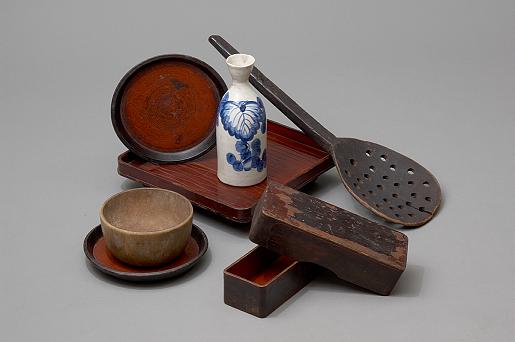- Add to Favorites
-
Your web browser does not support
Add to Favorites.
Please add the site using your bookmark menu.
The function is available only on Internet Explorer

11Story
|
The Kreiner Collection 1964, 1966 und 1969 |
|
Josef Kreiner (b. 1940) was initially active as a professor and board member at the Institute for Japanese Studies, University of Vienna. He was later appointed to the University of Bonn, where he remained until his retirement. A large number of the acquisitions from the years 1964 to 1972 derive from his collective ventures. As the museum possessed few objects from Japan’s agricultural milieu, with the exception of a few raincoats, straw hats and shoes, and models of agricultural implements from the Siebold collection, Kreiner aimed to compensate for this absence of folk culture objects through intensive collecting of agricultural devices and agrarian household goods.
|
|
Agrarian household goods Kreiner Collection 1966 |
 |
|
|
Winnowing machines, used to clean corn, were invented as early as the second century B.C. in China, and reached Europe as late as 1720, where they revolutionized agricultural production methods. We do not know for certain when they reached Japan; according to information recorded by Kreiner in the acquisition notes they were “certainly in use prior to the Meiji period (1868-1911)” in Fukui. |
|
|
Winnowing machine (tōmi) from the Village of Izumi in Fukui Prefecture
|
| << PREVIOUS SECTION << |